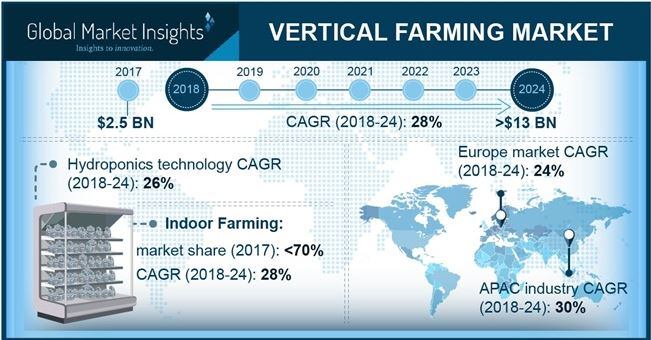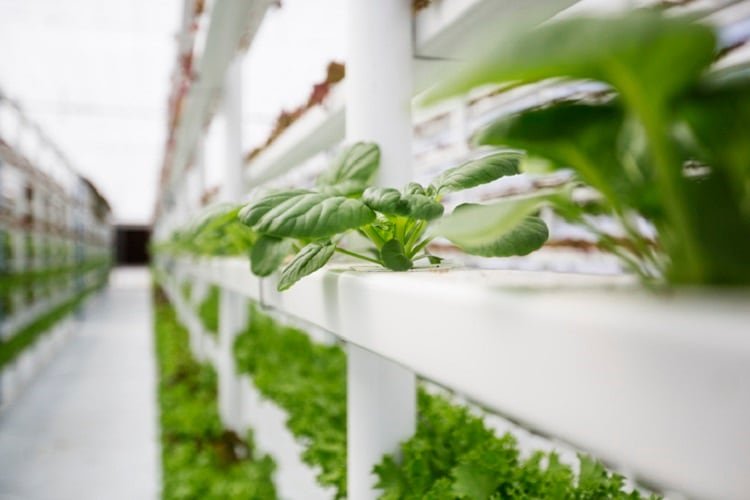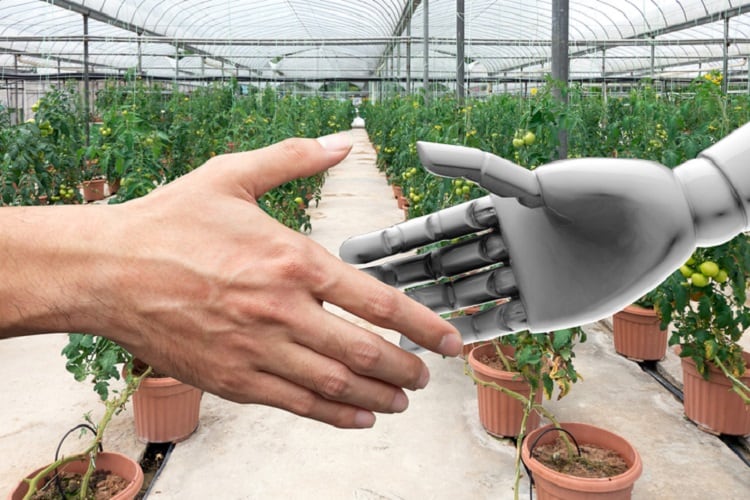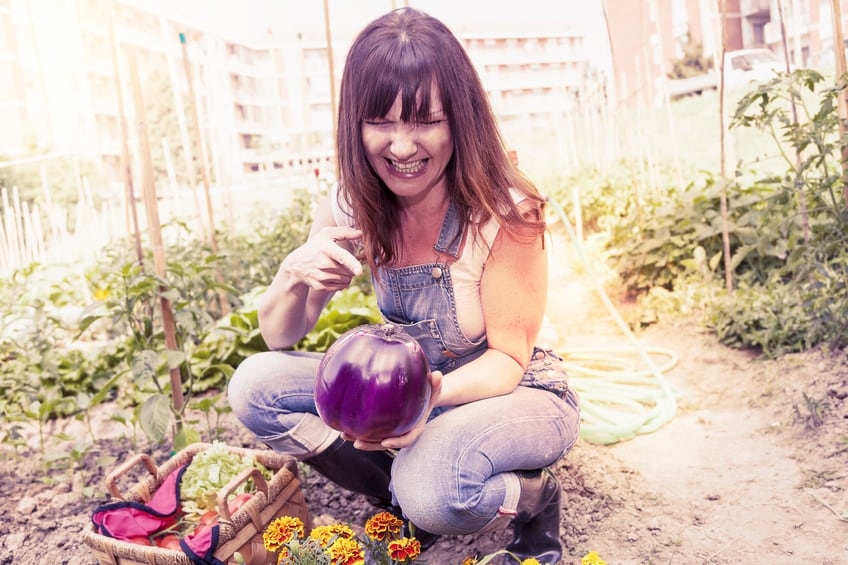Vertical farming could help solve some of the pressing challenges facing food production in the 21st century.
According to the United Nations, the current world population of 7.3 billion is expected to reach 8.5 billion by 2030 and 9.7 billion in 2050. To feed the world by 2050, the FAO estimates that food production will have to increase by 70% from 2007 levels. To put that in context, worldwide cereal production would need to increase from 2.1 billion tons to three billion and meat production will need to more than double to 470 million tons by 2050.
Turning more land over to agricultural production is not always a possible – let alone desirable – option. The UK, for example, already uses 72% of its landmass for agricultural production and the country still imports nearly half of the food it consumes.
Water use is also a barrier to increased food production. According to the OECD, farming accounts for around 70% of water use today and contributes to water pollution from excess nutrients, pesticides and other pollutants.
Climate change is likely to exasperate these issues. Meanwhile, urbanisation is expected to accelerate, with urban areas likely to account for 70% of the world population in 2050, compared to around 50% today.
The food system has to produce more to feed a growing population with a smaller rural labour force and finite land and water resources.
This perfect storm is driving interest in vertical farming. According to forecasts from research provider Global Market Insights, the vertical farming market is expected to expand by 25% by 2024, to reach a value of €11.4bn.

“Vertical farming is a sustainable agricultural initiative and holds promise for communities struggling with chronic food security problems. With the global population crossing the 7.5 billion mark in 2017 and continuously growing urbanization rate, the share of arable land per person has witnessed a gradual decline over the past few years. This trend is likely to continue over the coming years driven by the irregular weather and deteriorating environmental conditions,” research analyst Soumalya Chakraborty told FoodNavigator.
Shortening supply chains
Lower land-use requirements open up the possibility of bringing agricultural production closer to urban consumers, shortening supply chains and cutting food miles.
Fewer links from farm-to-fork aligns the vertical farming sector with growing consumer interest in traceability. Moving agricultural production into cities also has the potential to tackle food deserts and increase access to nutritious fresh produce.
“Setting up vertical farms in areas where people do not have easy access to healthy food will positively help in addressing the issue of ‘food deserts’. These projects may be set up as community initiatives in collaboration with industry experts to tackle the shortage of nutritious food items locally,” Chakraborty predicted.
“Moreover, the ease of setting up vertical farms in kitchens and backyards to grow the desired fruits, vegetables, and herbs with superior nutritious values, irrespective of the season and outside weather, may also interest a number of urban consumers towards setting up their own personal units.”
Nutrition will also be an important message for the vertical farming sector moving forwards, he continued.
“Items grown in vertical farms have superior nutritious values over conventional farm products. The controlled growth environment in vertical farms negates the requirement of agrochemicals such as pesticides and herbicides, thus keeping the natural nutritious value of the food items intact.”
Tech delivering quality and efficiency
Chakraborty believes that the evolution of vertical farming models and increased adoption will have profound implications for the agricultural supply chain.
He predicted: “On one hand, the use of conventional agrochemicals such as synthetic fertilizers, insecticides, and herbicides will be significantly reduced by this technology.
“On the other hand this technology will require an increased demand for HVAC systems, control systems to maintain the optimal aspects of climate, water management systems, specific LED lights to mimic the sunlight and other accessories required to set up the structure indoor or outdoor.”
New technological advances are still emerging to make vertical farming models more efficient and effective. Chakraborty highlighted ongoing R&D around “smart technology” to monitor conditions and optimise water and mineral use.
These protect yield quality and quantity and in the future Chakraborty suggested Internet of Things technology will also play a role. “Integrating IoT with this technology by recording the plant growth data may lead to the development of smart agriculture where the crop yield can be traced and enhanced through smart phones and computers from any corner of the world.”
What’s the catch?
Vertical farming can produce more food from fewer land and water resources. Vertical farming methods also negate the need for harmful chemical fertilisers and pesticides.
However, growing produce stacked on shelves indoors requires significantly more energy use than conventional agriculture. Vertical farms rely on artificial lighting even if there are windows due to the narrow and deep shelves used to increase the yield per square foot. And while climate control systems provide optimal growing conditions they are also energy hungry.
For instance, according to data from the UK Department of Food Environment and Rural Affairs, to grow lettuce in UK greenhouses it requires an estimated 250kWh of energy a year for every square metre of growing area. This compares to 3,500kWh a year for each square metre of growing area in vertical farms, according to data from the German Aerospace Center (DLR) in Bremen in conjunction with the Association for Vertical Farming (AVF).
An additional barrier to expansion are high start-up costs, Chakraborty added.
“The global vertical farming industry is at its nascent stage with several companies investing dearly for research and development,” he noted.
In the future, technological development is likely to focus on improving affordability and addressing concerns over energy use.



